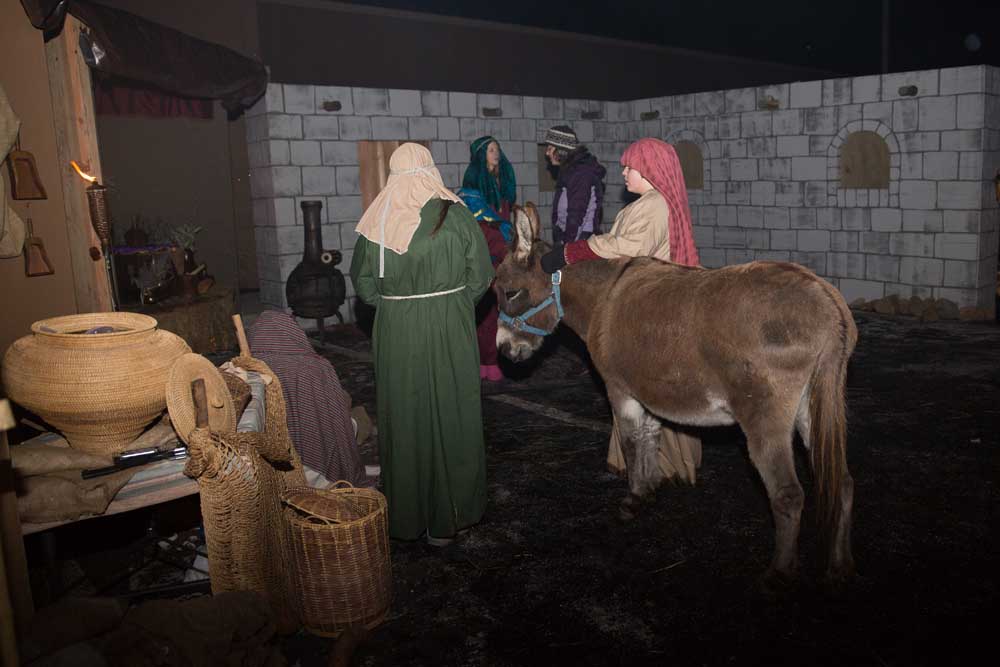Experience the Journey to Bethlehem in Central Oregon
Published 12:00 am Sunday, December 4, 2016

- Submitted photoA villager brings her donkey to the market at Journey to Bethlehem in December 2014.
Snow had begun to fall and light was fading. A very pregnant Mary and her husband, Joseph, were traveling through the town of Bethlehem in search of a place to stay. The couple passed by bartering vendors, dancers and live animals, along the way.
They found shelter in a stable nearby and Mary gave birth to a son. Surrounded by shepherds, all wrapped in cloths while he slept in a manger: the newborn baby Jesus.
Bend Seventh-day Adventist is inviting community members to take a Journey to Bethlehem, a free interactive holiday walking tour, to learn the meaning of a Christian Christmas.
The volunteer effort has been in the works since February. This year’s event is expected to draw a crowd of 3,000 to 4,000 people.
“For me, it is an opportunity for people to take a very close and personal look at the night Jesus was born back in that culture,” said Juline Bodnar, director of Journey to Bethlehem. “Every year we have people that have never heard the biblical Christmas story — they’re familiar with Rudolph and Frosty and those characters — but they’ve just never heard the complete story, and to me we’re hitting that mark of trying to make it welcoming to everybody.”
The city of Bethlehem is a rectangular piece of land in northeast Bend on the church’s property that has been transformed using a production set of stables, householders tents, trade vendors, an inn, a dancer’s home and more.
During the tour, groups walk down a torch-lit path, passing by gathered wise men, bribing their way past Roman guards and making their way through Bethlehem. The journey is filled with bartering vendors, dancers and live animals. At the end, travelers encounter a modest manger scene sheltering Mary, Joseph and baby Jesus.
The interactive nature of the event makes it a one-of-a-kind experience. The set comes alive through the actors and props that show the chaos and business of the city.
Roman soldiers are asking for taxes to be paid, vendors cook whole fish and sell them for dinner, and people huddle around fire pits to keep warm. Trade was a key part of the society and culture, the exchanges with tradesmen draws many of the visitors in.
“I think that is one of the things that’s the neatest for people,” said Bodnar. “They may have never seen someone actually weaving and carding wool, or they’ve never seen someone making pottery, and I think that speaks to a part of us, most of us don’t get to learn those skills and traits, but it very much was how people made a living back then.”
While the vendor’s goods cannot actually be purchased, the scene gives visitors a taste of what the city was like at that time.
— Reporter: 541-383-0351,mcrowe@bendbulletin.com






